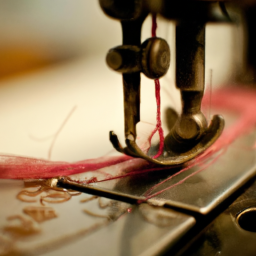
The History of Sewing Machine

The invention of the sewing/” title=”Stitching Stories: A Beginner's Guide to Sewing”>sewing machine revolutionized the textile industry and forever changed the way we produce clothing and other fabric-related items. s dates back to the early 19th century when inventors began exploring ways to automate and improve the process of stitching fabric together. Let’s take a journey through time to explore the fascinating evolution of this incredible invention.
The First Patents

In 1790, the first patent for a sewing machine design was filed by an English inventor named Thomas Saint. However, there is no evidence that Saint’s machine was ever built, and his invention remained unknown until about 50 years later.
Elias Howe and the Lockstitch
In the mid-19th century, American inventor Elias Howe successfully perfected and patented the lockstitch sewing machine. His design used two threads and a needle with an eye at the pointed end, empowering the machine to create tight and sturdy stitches that were indistinguishable from hand-sewn ones.

Singer Sewing Machines Dominate
In 1851, Isaac Merritt Singer introduced the first commercially successful sewing machine. The Singer sewing machines quickly gained popularity due to their durability, versatility, and ease of use. These machines featured a foot pedal mechanism that enabled users to control the stitching speed.

Further Innovations
Over the years, sewing machines underwent continuous advancements. In the late 19th century, electric models began replacing the older treadle-powered machines. Electric sewing machines significantly improved efficiency and made the process of sewing even more accessible for individuals and industries alike.
Modern Sewing Machines
Today, sewing machines have become more sophisticated and feature-packed than ever before. Computerized models with programmable stitch patterns, automatic thread cutters, and LCD screens have transformed sewing into an art form that merges tradition with technology.

The Impact
The sewing machine revolutionized the textile industry, making clothing and textiles more affordable, diverse, and accessible to people worldwide. It also opened doors for countless entrepreneurs and designers to establish successful businesses, allowing for mass production and creative expression.
Conclusion
The history of the sewing machine showcases the ingenuity and perseverance of inventors throughout the years. From early patents to modern computerized wonders, these machines have transformed the way we sew and have left an indelible mark on human history, shaping the world of fashion and textiles as we know it today.




